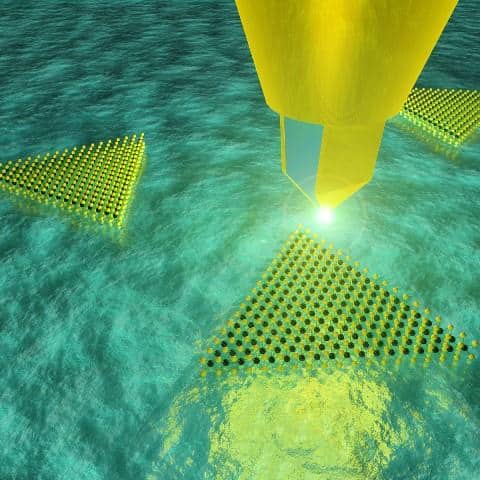The team, based at the DOE’s Lawrence Berkeley Laboratory, used the so-called Campanile probe to analyse molybdenum disulfide, a member of a family of semiconductors called transition metal dichalcogenides (TMDCs), whose optoelectronic properties hold great promise for the next generation of high-speed electronics.

Only a single molecule thick, 2D-TMDC materials boast superior energy efficiencies and a capacity to carry much higher current densities than silicon.
However, since their experimental “discovery” in 2010, performance has lagged behind theoretical expectations because of a lack of understanding properties at the nanoscale.
James Schuck, one of the main researchers on the project, explained that use of the Campanile probe (named after the University of California’s iconic Campanile clock tower) enabled the team to analyse the material at the nanoscale and yielded a number of discoveries that could help speed its commercial application.
Chief among these findings was the discovery of a 300 nanometer wide, energetically disordered edge region. “This disordered edge region, which has never been seen before, could be extremely important for any devices in which one wants to make electrical contacts,” said Schuck. “It might also prove critical to photocatalytic and nonlinear optical conversion applications.”




Red Bull makes hydrogen fuel cell play with AVL
Formula 1 is an anachronistic anomaly where its only cutting edge is in engine development. The rules prohibit any real innovation and there would be...